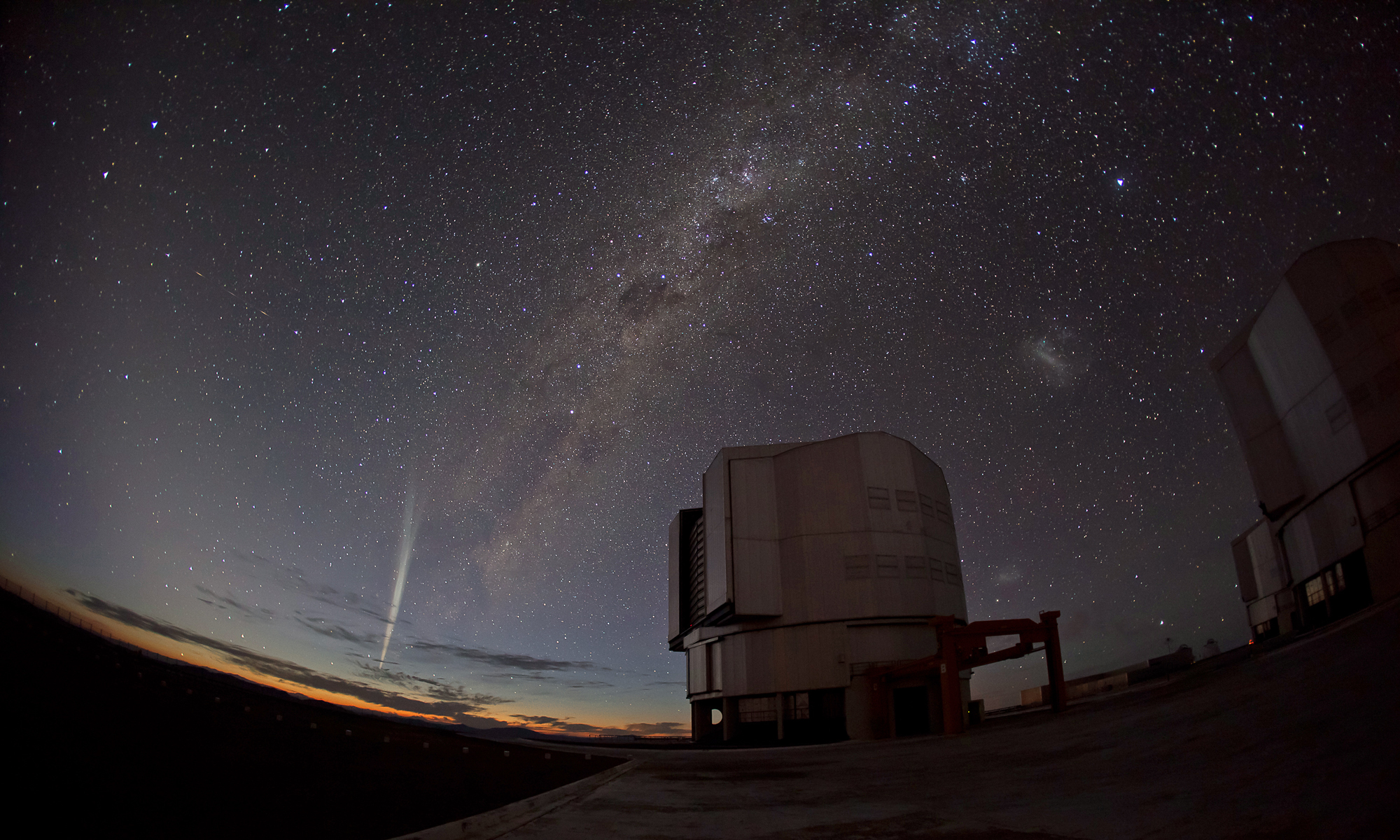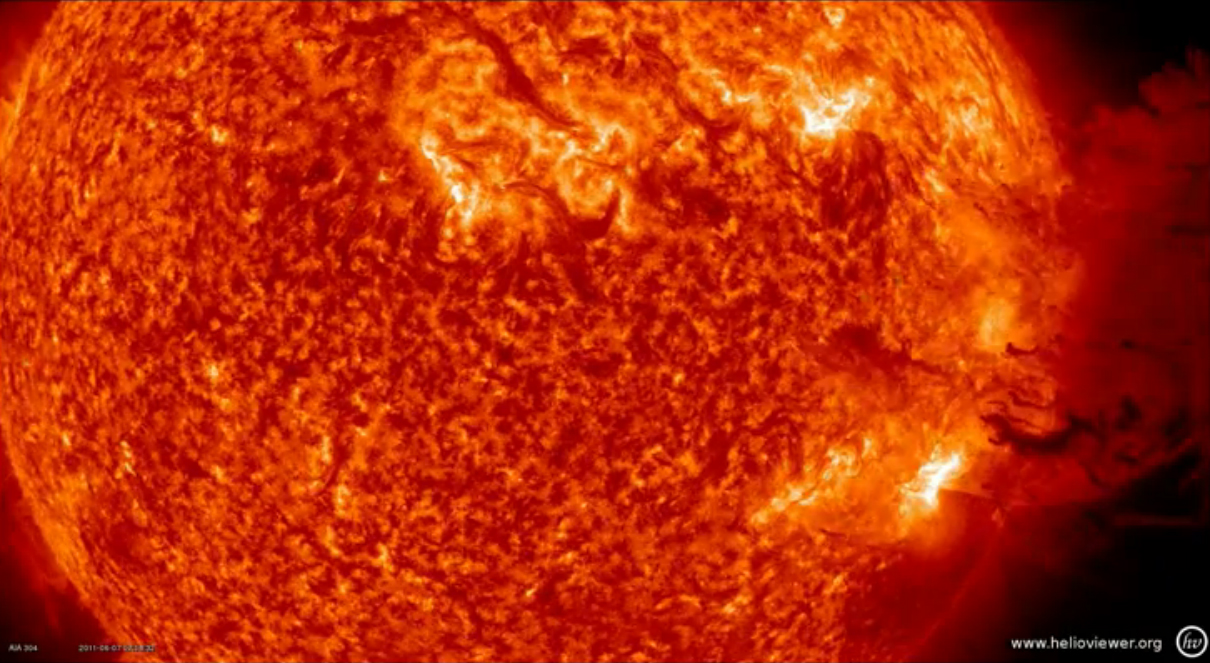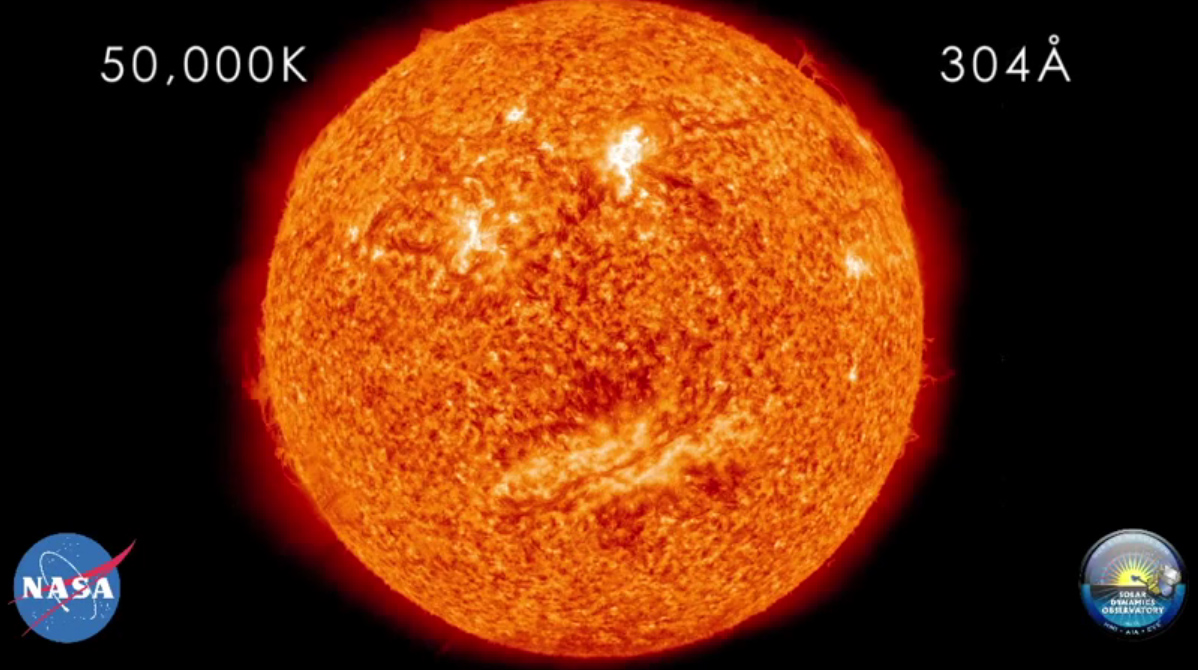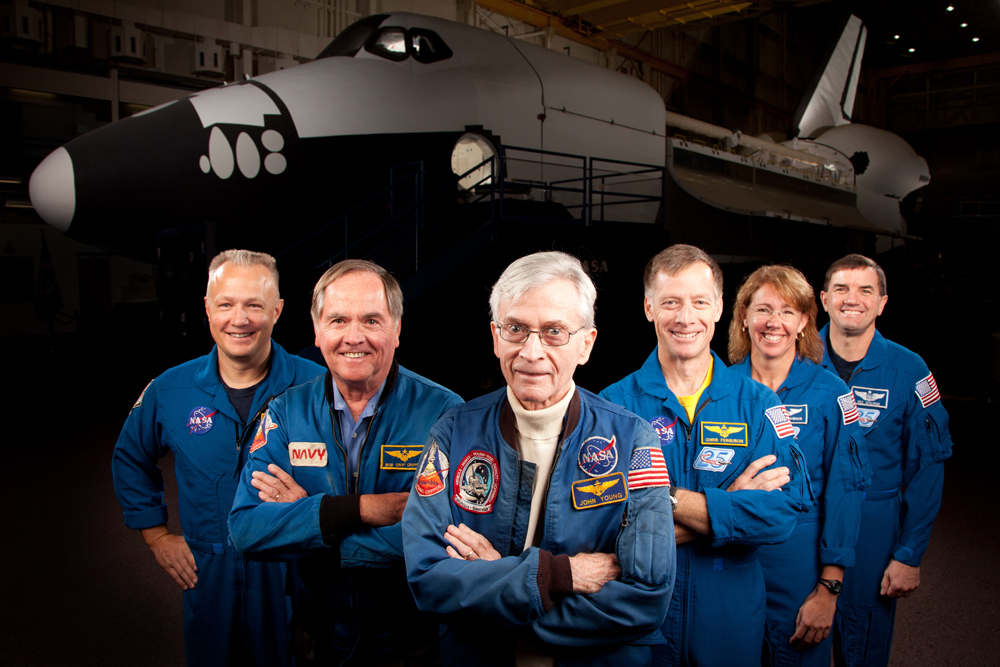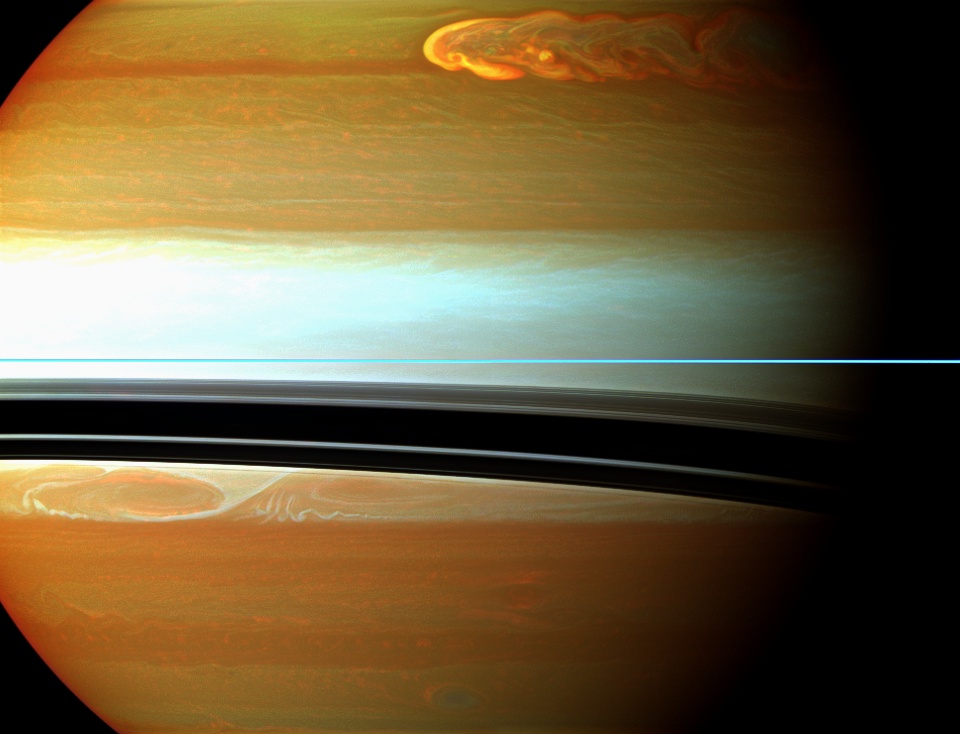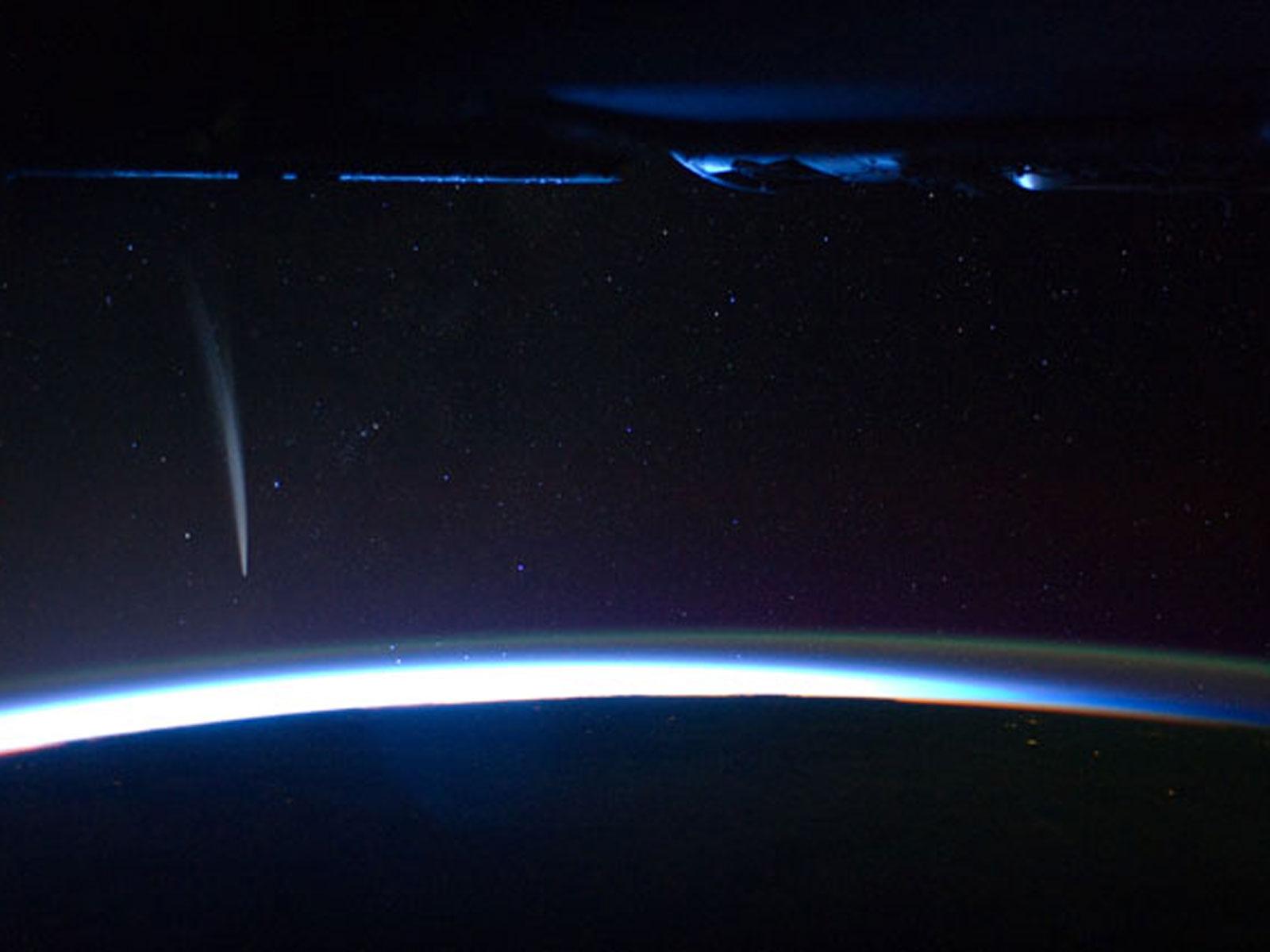Vote Now! The Best Space Photos of 2011
Comet Lovejoy Over Chile
The stunning comet that survived a recent brush with the sun is amazing astronomers again, this time in dazzling new photos captured just before sunrise over Chile in December.
The provided a jaw-dropping sight for astronomer Gabriel Brammer, photographed the comet rising ahead of the sun on Dec. 22 at Paranal Observatory in Chile's high Atacama Desert, who snapped this view and others of the icy wanderer. [Full Story]
NEXT: The Sun's Massive Storm
The Sun's Massive Storm
The sun unleashed a massive solar storm on June 7 in a dazzling eruption that kicked up a vast cloud of magnetic plasma that appeared to rain back down over half of the sun's entire surface, NASA scientists say.
"The sun produced a quite spectacular prominence eruption that had a solar flare and high-energy particles associated with it, but I've just never seen material released like this before," Young said. "It looks like somebody just kicked a giant clod of dirt into the air and then it fell back down." [Full Story]
NEXT: The Sun Has a Smile
The Sun Has a Smile
Our sun is apparently a happy star according to a video from a NASA observatory. The video shows a pattern of sunspots that, when viewed from afar, forms a vast happy face smiling across face of the sun.
The video shows an apparent smiley face on the sun as seen by the Solar Dynamics Observatory. The solar happy face is seen in different wavelengths in a video posted on July 25, 2011.[Full Story and image]
NEXT: First & Last Space Shuttle Crew
First & Last Space Shuttle Crew
The first and last astronauts to fly on NASA's space shuttles met Nov. 2 in Houston to pose for a series of historic photographs.
John Young and Robert Crippen, who in April 1981 flew onboard space shuttle Columbia on its STS-1 mission, joined the final shuttle crew — STS-135 astronauts Chris Ferguson, Doug Hurley, Sandra Magnus and Rex Walheim — at NASA's Johnson Space Center. The six former and current astronauts united at the Space Vehicle Mockup Facility, where both crews had trained prior to their missions in the agency's full-scale shuttle mockups.
"This picture was important to me," Crippen said in an interview with the Houston Chronicle. "I thought it kind of gave us the bookends of the program." [Full Story]
NEXT: Huge Saturn Storm
Huge Saturn Storm
Saturn's northern storm marches through the planet's atmosphere in the top right of this false-color mosaic from NASA's Cassini spacecraft. The images were taken on January 11, 2011, over about 50 minutes, at a distance of approximately 569,000 miles (915,000 kilometers) from Saturn. [Photos: Monster Storm on Saturn]
NEXT: Comet Lovejoy From Space
Comet Lovejoy From Space
Comet Lovejoy is visible near Earth's horizon in this nighttime image photographed by NASA astronaut Dan Burbank, Expedition 30 commander, onboard the International Space Station on Dec. 21, 2011.
The comet survived a close encounter with the sun and amazed astronomers and skywatchers alike with its dazzling tail after the solar encounter.
"When it disappeared behind the sun, I think astronomers thought it would not appear again, it would probably burn up," Burbank said. "But it's probably the most spectacular thing that you can imagine." [Full Story]
NEXT: A Black Hole Ring
A Black Hole Ring
The black hole ring photo, which NASA released Feb. 9, was taken using several space telescopes across different parts of the light spectrum. Two interacting galaxies, known collectively as Arp 147, set the stage for the spectacular view. [Full Story]
NEXT: 6 Solar System Planets in 1 Photo
Breaking space news, the latest updates on rocket launches, skywatching events and more!
6 Solar System Planets in 1 Photo
In February, NASA unveiled a striking portrait of our solar system as seen by the Messenger probe, which was headed for the planet Mercury. The images, taken in Nov. 2010 and released on Feb. 18 of this year, all the major planets except Uranus and Neptune, which were too faint to detect.
Earth's moon and several of Jupiter's big moons – the Galilean satellites Callisto, Ganymede, Europa and Io – were also visible, and are highlighted in insets. [Full Story]
NEXT: Shuttle Discovery and ISS: Feb. 2011
Shuttle Discovery and ISS: Feb. 2011
Skywatcher Rob Bullen of Forest of Dean, Gloucestershire, England caught this snapshot of shuttle Discovery (left) as it approached the International Space Station on Feb. 26, 2011. Discovery was flying its final mission, STS-133. [Full Story]
NEXT: First Photo from Mercury Orbit
First Photo from Mercury Orbit
NASA's Mercury Messenger probe captured this historic image of Mercury, the first ever obtained from a spacecraft in orbit about the solar system's innermost planet. The photo was taken on March 29, 2011 at 5:20 am EDT. [Full Story]
NEXT: Supermoon of 2011

Space.com is the premier source of space exploration, innovation and astronomy news, chronicling (and celebrating) humanity's ongoing expansion across the final frontier. Originally founded in 1999, Space.com is, and always has been, the passion of writers and editors who are space fans and also trained journalists. Our current news team consists of Editor-in-Chief Tariq Malik; Editor Hanneke Weitering, Senior Space Writer Mike Wall; Senior Writer Meghan Bartels; Senior Writer Chelsea Gohd, Senior Writer Tereza Pultarova and Staff Writer Alexander Cox, focusing on e-commerce. Senior Producer Steve Spaleta oversees our space videos, with Diana Whitcroft as our Social Media Editor.
